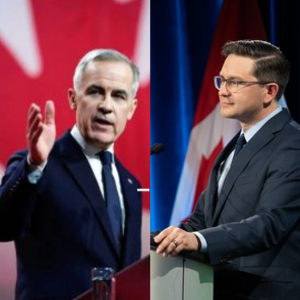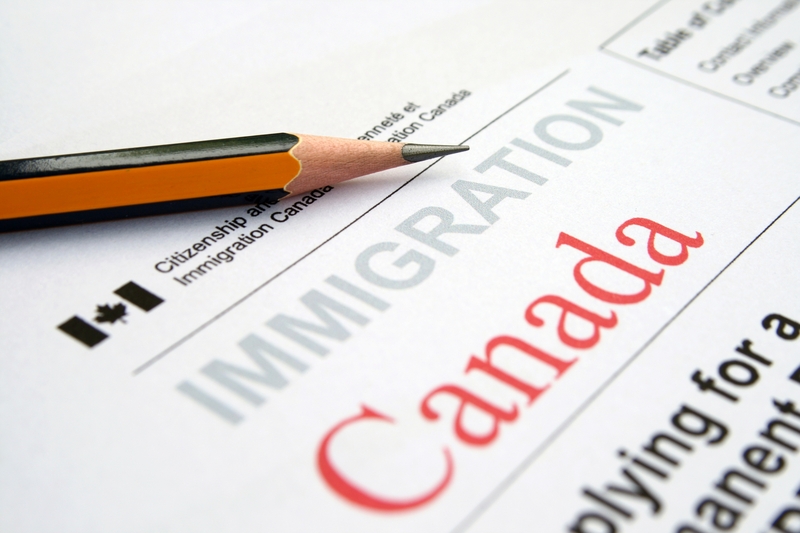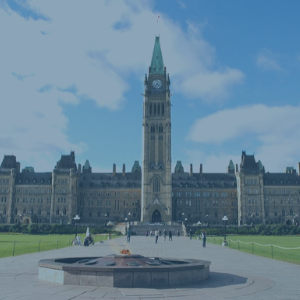
Initial polling shows the incumbent Liberals ahead but threatened in the competition with the Bloc and NDP while the Conservatives are struggling to defend their current seats. These are the findings of INNOVATIVE’s latest online survey of 1417 eligible Canadian voters conducted from August 12th to 16th, 2021.
Campaign Spotlight: Liberals
When it comes to winning seats, the sitting Liberal government faces three serious competitors. In Quebec, the Liberals are toe-to-toe with the Bloc fighting for seats in the Montreal suburbs and in the “regions” of Quebec. In the suburbs and small towns of English Canada the Liberals are competing with the Conservatives. And in a potpourri of seats ranging from industrial to the North to urban cores, the Liberals are vying with the NDP. This tripartite of challenges to the Liberals strike at an inherent weakness of the Liberal coalition, the diversity of opinion and plurality of its voters across the country. Their challenge is to keep that diverse collation united.
As our seat cluster release from last week shows, the Liberals are starting in good shape. This week we show the Liberals with strong leads in Ontario and the Atlantic and modest leads in BC and Quebec.
The best news for the Liberals is “time for a change”. For the Liberals, the fewer voters who think it’s time for a change, the better. Time for a change is lower than in 2019, although it has been inching up over the past few weeks. This metric is crucial for the Liberals. No one looks at the opposition until they decide to throw the sitting government out. The Liberals need to stop the time for a change sentiment from growing further.
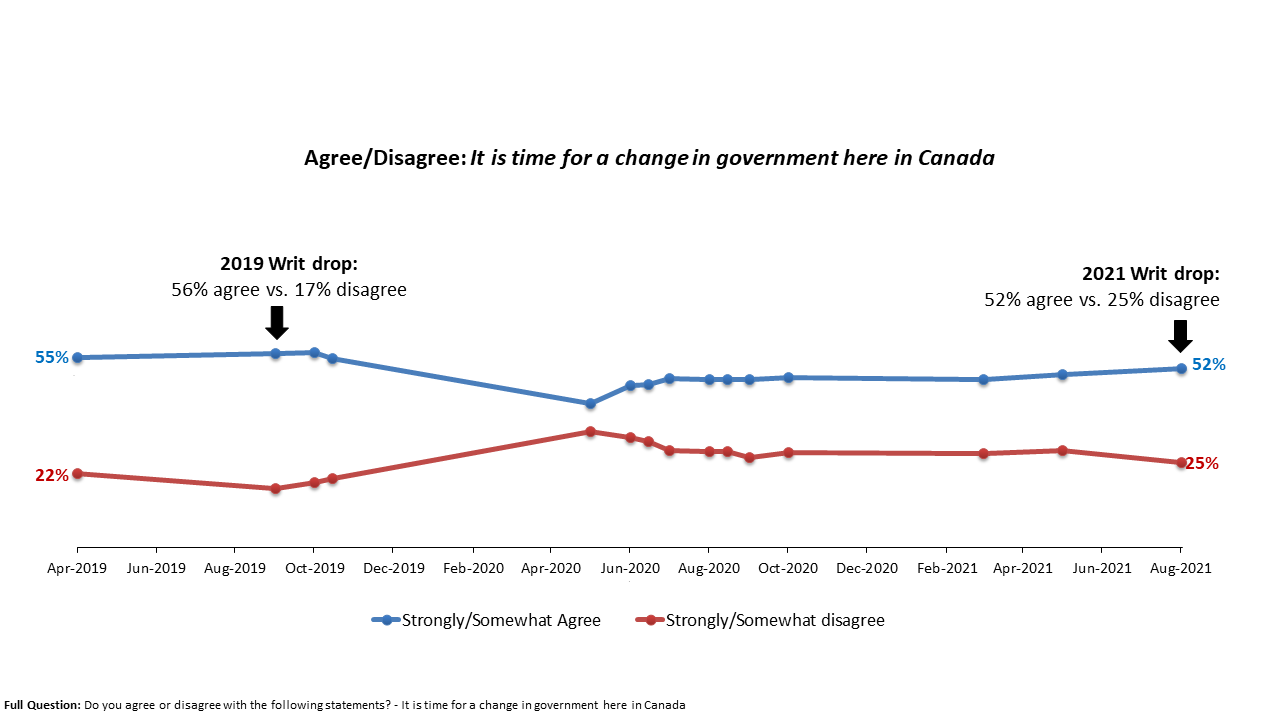
Campaign Spotlight: NDP
The NDP are on a roll. We have not seen their vote this high since 2015. Singh’s favourables are up. While overall awareness levels are starting low, the NDP are capturing significantly more attention than the other opposition parties, and people like what they have been hearing. Crucially, the NDP are gaining ground among Core Left voters and Economically Alienated voters. Their Bernie-type program should help them maintain their momentum with those groups. Key for the NDP is finding the right issues to build on their early momentum.
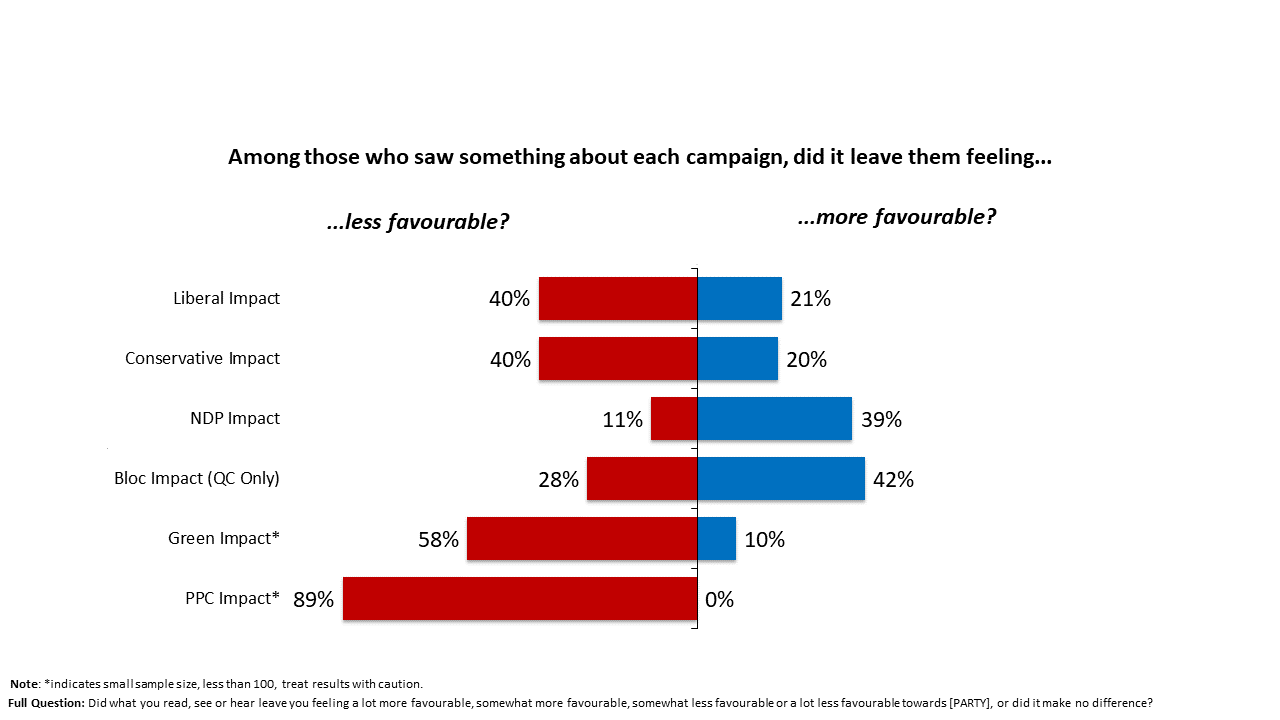
Campaign Spotlight: CPC
It’s not easy being Conservative. Two of the key values their coalition is based on (fiscal conservativism and populism) have declined in the pandemic. They are fishing in a smaller pool than in 2019. Even with that challenge in mind, they are not off to a great start. They have low awareness (22%), and voters don’t like what they are hearing. They only lead in Alberta (although they are close on the Prairies and the sample is small). If you go deep into the deck to where we track the vote by segments, there is some pretty bad news. Right now, the CPC are tied with the NDP for second among the Business Liberals with just 17% of that segment’s vote and have only 32% of the raw vote among Deferential Conservatives. Even worse, Trudeau beats O’Toole on “best PM” among Deferential Conservatives. The only good news is that it is not a great challenge for the CPC campaign to regain a lead in that segment by convincing Deferential Conservatives that the CPC is better than the Liberals at delivering on issues that Deferential Conservatives care about.
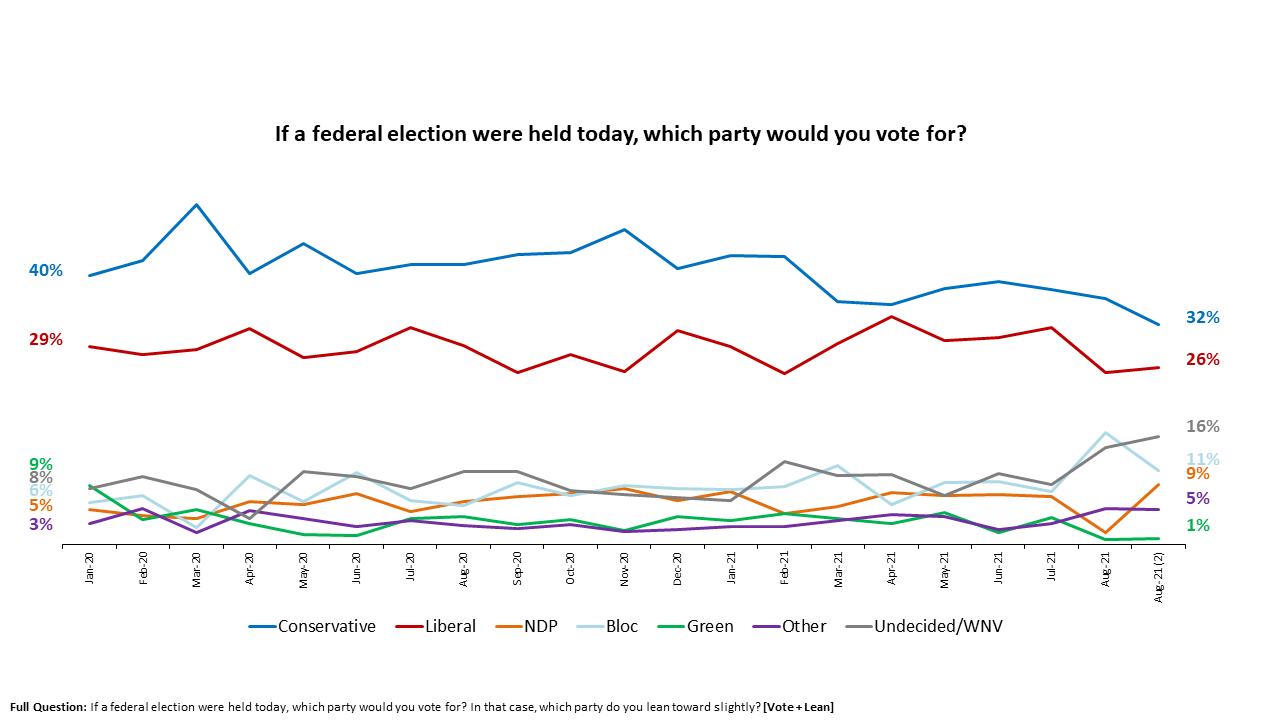
Campaign Spotlight: Bloc
While the Bloc is still struggling to secure voters’ attention, the impact of what voters are hearing is very similar to the NDP in its positive impact. The Bloc need to find some issues that will leave Quebecers worried whether they can trust Trudeau to do what is right for Quebec, but they are building on a strong brand and good momentum. The crucial decision for swing Liberal-Bloc voters is whether they want a strong regional voice or representation within federal government that occasionally compromises with broader interests.
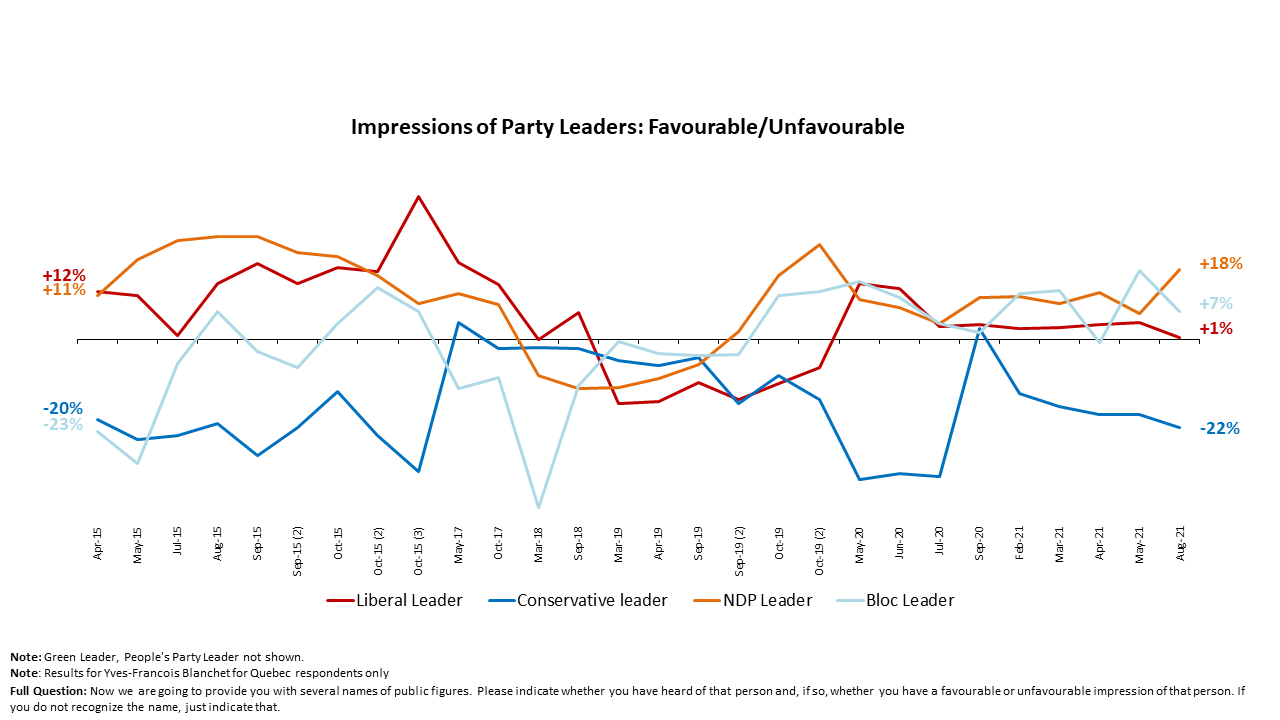
Decided Voters
Typical for the start of a campaign, almost half of all voters have already made up their minds. The Tories and Bloc have the firmest vote, with roughly 6-in-10 already reporting that their minds are made up. The NDP vote is, at the moment, the weakest of all the main parties with just 4-in-10 declaring that they’re definitely voting NDP. The Liberals are in-between at 5-in-10.
Summary:
The Liberals start in a strong position. They are starting in better shape than the last election against all three opponents.
The most important issue for the Liberals is to stop any further growth in “time for a change”. Given the positive momentum and underlying brands of the Bloc and the NDP, once voters open up to change, it will be hard for the Liberals to argue they are the lesser of evils with the Bloc and NDP swing voters.
The best news for the Liberals coming into the election is that the CPC is in significant trouble with no indication that they are turning a corner. The CPC will have to take some chances to turn things around in just 5 weeks.
Research Methodology Overview:
At INNOVATIVE, we believe that campaigns matter. Parties make their pitches to voters and voters decide. One of the things that make measuring campaigns interesting is that different voters react to the same message differently and make their decisions at different times.
INNOVATIVE’s tracking will not only look at the horserace, we will also look at what voters are hearing, how they feel about those messages and whether they have made up their minds or want to hear more.
We also focus on the campaign dynamics – is anybody moving and, if so, who. In tracking the dynamic, we group voters who share similar outlooks together in key voter segments – party identification, value clusters, economic clusters, and “time for a change” clusters.
- Party identification is similar to what marketers call brand affinity. Just as most baseball fans have a favourite team, most voters have a party they feel closest to. These feelings voter hold towards parties creates “confirmatory bias”, a tendency to consume new information to confirm your pre-existing belief. If Liberals say what they have heard about the Liberal party leaves them more favourable, that is not big news. But if non-Liberals like what they hear, that is big news.
- There are many values in play in Canadian politics. For a very comprehensive look at Canadian values overtime and in comparison to the US, check out https://innovativeresearch.ca/neighbours-what-makes-politics-in-canada-and-the-us-alike-and-different/. For our election tracking, we have focused on four key values to group people into 6 value segments. Some of the groups fall more naturally behind one of the other of the parties. The challenge is to build a winning coalition that bridges the differences.
- Voters’ economic experiences create a third attitudinal cluster. We combine how people feel about whether people like them can get ahead with whether they feel they are having an easy or hard time making ends meet. A key group in this analysis are the economic strugglers who feel they can get ahead in theory but are not in reality.

